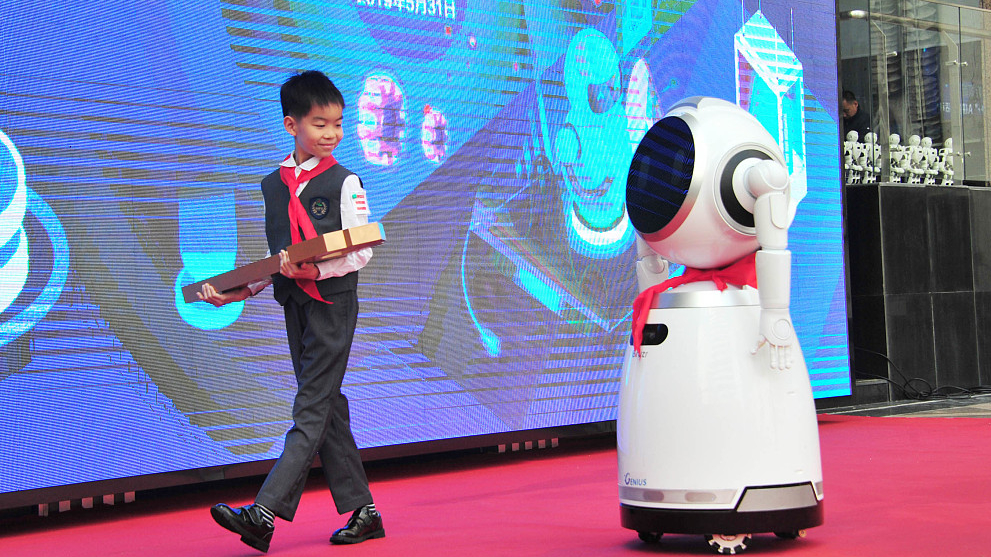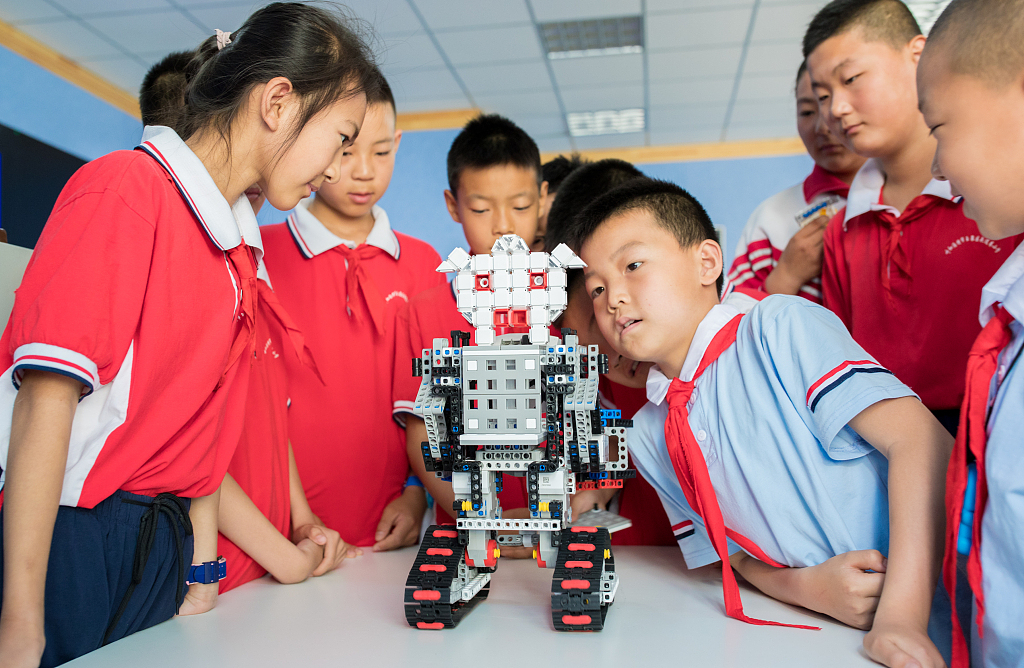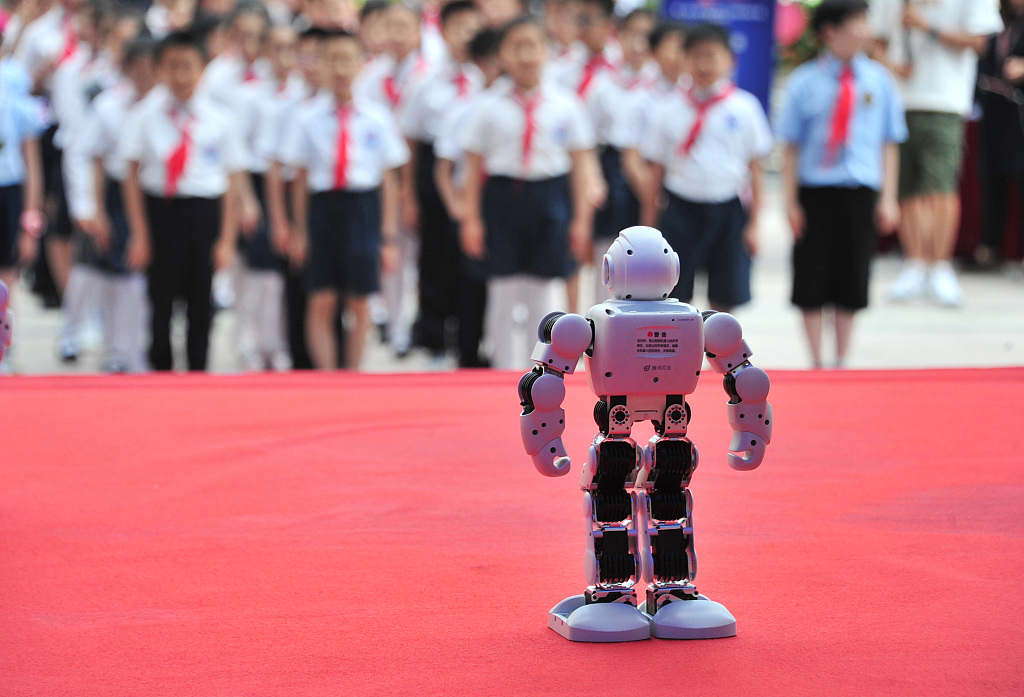

Editor's note: Alessandro Golombiewski Teixeira is a National Thousand Talent Distinguished Professor of Public Policy at the School of Public Policy and Management, Tsinghua University and a professor of International Business at Schwarzman College, Tsinghua. He is a former special economic advisor to the President of Brazil and former minister of tourism, and minister of development, industry, and foreign trade of Brazil. He was also president of the World Investment Association (WAIPA). The article reflects the author's opinions and not necessarily the views of CGTN.
The world has been rapidly impacted by new technologies. One of these areas is artificial intelligence (AI), a field of computer science that aims to produce devices that simulate the human ability to reason, perceive, make decisions and solve problems.
Currently, several applications of AI are being used, such as computer programs, security applications, games, information systems, robotics and medical diagnostic programs.
Technologies like AI have been disrupting and improving a wide range of sectors around the world, while education, the second-biggest economic sector globally, has remained largely untouched.
However, the future of education has already arrived and is changing our educational environment with unprecedented speed. AI is being added in the vertical aspects of education, proposing modern learning methodologies. Through the so-called adaptive platforms, individualized learning trails are proposed, capable of offering a personalized experience for each student and revolutionizing the way we teach and learn. In this new Educational Revolution, China has played and will play a leading role.

Students interact with artificial intelligence robots at Toudaoxiang Primary School in Yuquan district, Hohhot, June 13, 2019. /VCG Photo
In 2017, China revealed an ambitious master plan to lead the world in both AI research and deployment by 2030. In this plan, China has established mechanisms to improve the linkage and dialogue between education and the AI industry to offer increased and improved infrastructure for AI education.
China wants to improve the Chinese educational system, making sure that education is no longer a luxury reserved for the wealthy but instead accessible by every Chinese.
The objective of AI technologies in education is to understand what students struggle with and develop elaborate specialized content to reinforce their knowledge.
Some AI-based systems can already anticipate difficulties that students may have in future subjects. This allows teachers to prepare a teaching structure more focused on the profile of the students independent of where they are.
It also allows educational institutions to provide interfaces capable of deeper engagement with students. That way, they can ask the machines themselves without having to take up the teachers' time. By combining AI with other modern technologies and tools, such as Big Data and gamification, the classroom of the future can reinvent the Chinese educational environment.
The central idea is that the classrooms will become innovative, equipped with cameras and microphones that allow the identification of the level of class engagement.
In this way, they will be able to improve knowledge acquisition, personalizing the teaching according to the profile of their students. The effective use of classroom-integrated AI platforms also provides teachers with a series of reports so they can follow their class throughout the school year.

The second Shanghai youth artificial intelligence innovation competition was launched in the square of the Shanghai Youth Activity Center, May 31, 2019, /VCG Photo
With the data in hand, the teacher can evaluate their students' progress in relation to the objectives set for that period. Based on their analysis, teachers can then propose new learning paths, both for students who need support and for those who already demonstrate mastery of the subject and may want new challenges.
Through smart apps, they can communicate with the teacher and the school, which makes the information exchange process more agile and efficient. Students can also access the network to watch video classes, chat with virtual tutors to ask questions, or review some content.
Everything becomes available more easily, which can expand the exploration of knowledge and reduce the gap between urban and rural education.
This Chinese vision is revolutionizing the education system, not just due to the technology but also the scalability of this project. It is currently estimated that more than 60,000 public schools in China are using and testing neural marking systems. Many others are using AI educational technologies adapted from distance learning and performance evaluation systems.
If we can identify the right path to follow in our education system, advances in AI technology will have the potential to change the course of human history forever. No matter how one perceives new technologies such as robotization, smart transportation and interconnective technologies, the future is already here, and it is not a sci-fi movie. Chinese society has already embraced artificial intelligence as a tool that is moving it toward the Chinese dream, which is why China is in an advantageous position.
(If you want to contribute and have specific expertise, please contact us at opinions@cgtn.com.)

Copyright © 2018 CGTN. Beijing ICP prepared NO.16065310-3
Copyright © 2018 CGTN. Beijing ICP prepared NO.16065310-3